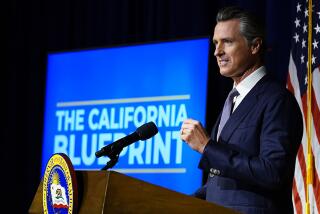Subsidies and Tax Relief Have Also Cost the State
- Share via
Charles E. Cook Jr. cites the national recession, increased demands on social spending, the initiative process and the energy crisis as variables that led to the state’s fiscal shortfall (Commentary, Aug. 11). However, he fails to mention two other pieces of the budget puzzle: tax expenditures and tax relief.
Tax subsidies, also called tax expenditures, have been enacted by the Legislature over time and cost the state $30 billion annually. Many of these expenditures, like the manufacturer’s investment credit and credits for economically depressed areas, were implemented to encourage business investment and job creation. Given the magnitude of the budget crisis, it would be prudent to review tax expenditures to ensure that they are achieving their desired end. They should be scrutinized and evaluated to the same degree as other state programs.
When the state was flush, the public requested, and the Legislature provided, relief to taxpayers by reducing sales taxes and vehicle license fees and implementing various tax credits (child care, senior citizen homeowners/renters and tractor/agricultural exemptions). Since 1997, those tax cuts have placed over $25 billion in the hands of working Californians. But the tax relief enacted over the last five years, along with the other factors mentioned by Cook, played a significant role in the decline of the state’s revenues.
Mark Ridley-Thomas
State Assembly
D-Los Angeles
More to Read
Get the L.A. Times Politics newsletter
Deeply reported insights into legislation, politics and policy from Sacramento, Washington and beyond. In your inbox twice per week.
You may occasionally receive promotional content from the Los Angeles Times.










